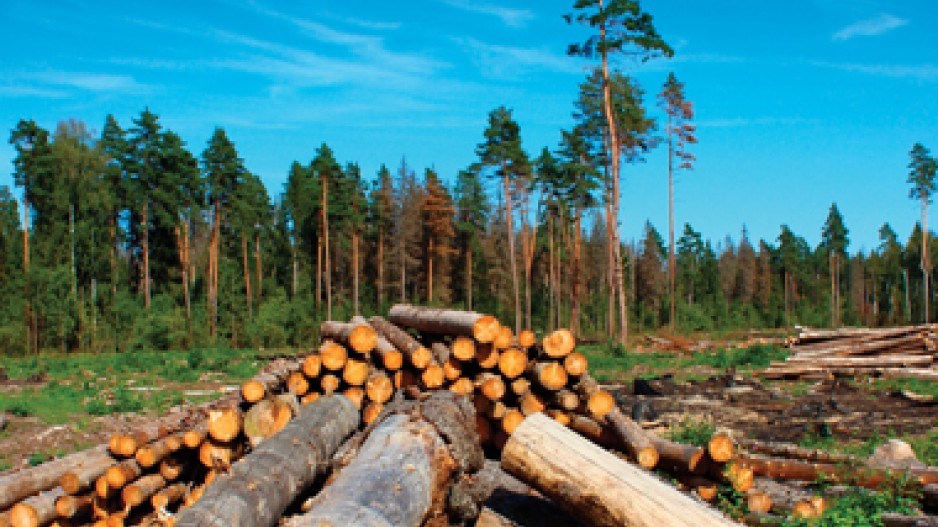Canada’s forest industry is pledging to do its part to fight climate change by reducing Canada’s carbon emissions by 30 megatonnes by 2030.
The Forest Products Association of Canada (FPAC) said its “30 by 30” project could account for 13% of the federal government’s total carbon reduction target.
But measuring the actual reductions to gauge the success of those targets could prove tricky.
Ken Lertzman, a professor at Simon Fraser University’s School of Resource and Environmental Management, said the devil will be in the details when it comes to reducing forestry’s carbon footprint and measuring the plan’s initiatives to prove they’re working.
“The goal is great,” he said. “Forests in the global system play a really important role. There are huge opportunities there. However, the details of how you do that really matter, and actually being able to do the accounting properly to know what the net effect [is] of any different kind of intervention in land management or in wood technology is really difficult.”
However, Werner Kurz, senior research scientist with the Pacific Forestry Centre, said people should not get hung up on numbers.
The bottom line is that, while most other climate action initiatives are focused on reducing greenhouse gases, forests – and oceans and grasslands – are the only things that remove carbon from the atmosphere.
“We can quibble about the numbers,” he said, “but the significant part here is the recognition that forests and the land sector more generally can make a genuine and significant contribution to climate change mitigation.”
FPAC represents 16 Canadian forestry companies or associations, including Canfor Corp. (TSX:CFP) and West Fraser Timber Co. Ltd. (TSX:WFT).
The association’s CEO, Derek Nighbor, said most of FPAC’s members have already made progress on the climate change file. For example, many have invested in fuel-switching by replacing natural gas with wood waste in drying kilns.
“Most of our companies are on the track already,” Nighbor said. “We’ve seen about a 65% reduction in GHGs [greenhouse gases] in the mills since the early ’90s. There are still some efficiency opportunities – moving to renewables or biofuels and realizing some additional efficiencies at the mill.”
The 30 by 30 plan has three main pillars for either reducing greenhouse gases or increasing carbon sequestration:
•using sustainable and innovative forest practices;
•developing new uses for wood; and
•improving mill efficiencies.
The strategy includes using more of the wood and wood waste from logging, rather than burning wood waste or leaving it to decay.
As long as trees are growing or as long as wood remains intact, carbon is sequestered. Carbon is released when wood or trees are burned or left to decay.
Nighbor said finding more uses for wood can increase carbon sequestration. Tall wood structures, like the 18-storey wood student residence the University of British Columbia is building, are one example.
Biomaterials are another evolving market. Cellulose can be used to make an alternative to plastics. For example, cellulose-based bioplastics are now used in the consoles of the new Ford Lincolns. Well-managed working forests can have a net benefit for climate change, as long as logged trees are replanted to provide a net gain from new growth.
B.C. was left in a deficit in that regard, thanks to a mountain pine beetle infestation that wiped out roughly half of the province’s harvestable timber.
Much of that pine beetle kill has been harvested, but the replanting has not kept up with the loss. On a positive note, a recent scientific study confirmed that B.C.’s pine forests are regenerating faster than expected, thanks, ironically, to warmer temperatures.
Nighbor said science and government will need to play a role in helping FPAC achieve its targets by continuing to invest in wood product innovation and pure research.
Genome BC, for example, is already funding several research products focused on tree genomics to develop pest-resistant trees. (A dead tree is a rotting tree, which releases carbon.)
“How can we generate more climate-resistant trees? How can we get higher yields?” Nighbor asked. “Through a host of scientific work and improved practices, we believe we can realize some real contributions in the forest. When the government’s thinking of innovation and clean tech and bioproducts, we want them to be thinking forestry.”
Governments can help the forestry industry meet its targets by providing policies and incentives, like carbon offsets, that help it invest in carbon reduction technologies. B.C. has made some efforts in that regard through carbon credits.
In 2014, of the 13 projects to receive funding under the provincial government’s carbon offsets program (formerly the Pacific Carbon Trust), eight were forestry-related.
Four were energy-related and four received funding for improved forestry management for the Great Bear Rainforest and Haida Gwaii.




